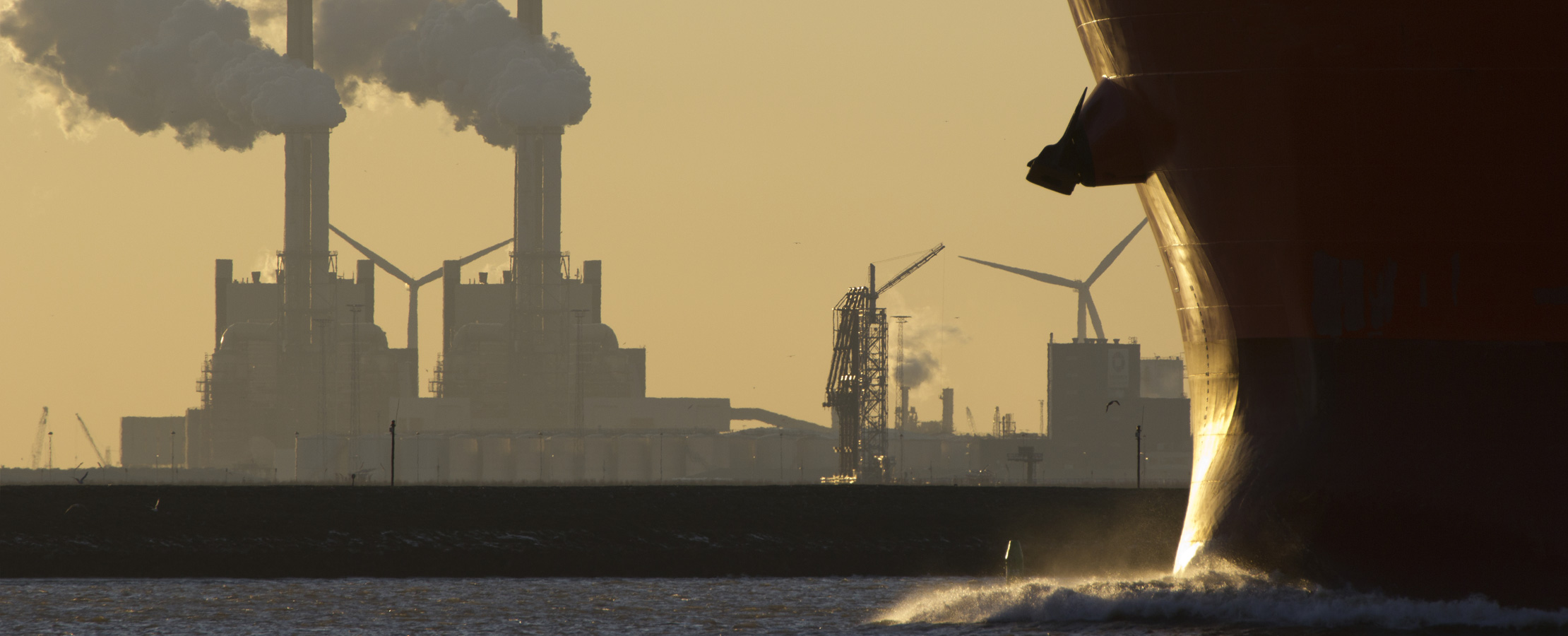In Europe's largest port, collaboration is key to cutting CO2 emissions
Ships come and go, goods are loaded and unloaded, oil and gas refineries cluster on the shore, and the bustle of commerce is everywhere on the shoreline of Port of Rotterdam in the Netherlands, Europe's largest port. All this activity is energy intensive – generating some 15 percent of the country’s total carbon emissions.
Yet it is here that the future of carbon abatement is being born, as the port is on the cutting edge of carbon capture and storage technology and processes. Carbon abatement is the process of reducing carbon emissions from traditionally carbon intensive industries, such as refineries, steel mills and cement plants.
As countries around the world work to lower carbon emissions, a variety of solutions are needed to suit different economies and infrastructures.
Carbon abatement involves making these industries more energy efficient, and capturing carbon dioxide from industrial processes before it reaches the atmosphere. Doing this successfully has a huge impact on carbon emissions overall, relatively quickly, at relatively low cost.
It is also a practical solution for countries that cannot quickly switch to renewable alternatives, as well as for countries that are in the process of transitioning from fossil to renewable fuels. Fossil fuels can still be used for some time, but with substantially lower carbon dioxide emissions.
Making carbon intensive industries more efficient through abatement provides a realistic path towards the ambitious carbon target which 175 international parties committed to in the Paris Agreement in 2015.
Sharing resources through industrial clusters
Many countries have found that carbon abatement techniques are especially effective when implemented in industrial clusters: geographical regions where numerous carbon intensive industries are grouped together.
Working together, the industries can form a hub to share resources and infrastructure. This allows them to minimize the cost of building and implementing abatement technologies.
Porthos is one of the largest of these industrial clusters, located in the port of Rotterdam in the Netherlands (Port of Rotterdam CO2 Transport Hub and Offshore Storage).
The Porthos project will capture carbon dioxide produced by these industries and store it in empty gas fields more than 3km beneath the North Sea, rather than releasing it into the atmosphere.
To do this, the companies in the port will use a collective pipeline to transport their carbon dioxide out to the gas fields, and a shared compressor system that means up to 2.5 million metric tons of carbon dioxide could be stored each year.
A cost-effective, high-impact solution
Carbon Capture, Utilization and Storage (CCUS) projects such as this are one of the most cost-effective ways to meet short-term emissions targets, and can have a large-scale impact.
Between 2008 and 2019, the Dutch government's Renewable Energy Support Scheme (SDE++) spent €4.5 billion per annum on sustainability projects in the Netherlands, preventing an estimated 42 million metric tons of carbon dioxide from entering the atmosphere. This spending was not solely targeting CO2 reduction, but also went on renewable energy infrastructure.
Over 15 years, the Porthos project alone is expected to prevent 37 million metric tons of carbon dioxide entering the atmosphere at less than half the cost.
Large-scale collaboration
The Porthos initiative is also an example of successful public-private partnership and cross-sectoral collaboration in order to achieve a shared goal. It is run as partnership between the Port of Rotterdam Authority, energy network operator Gasunie, and European business support organization EBN. Also playing a key role are the industrial companies based in the port, creating and capturing the carbon dioxide emissions that are to be stored. These include Air Liquide, Air Products, ExxonMobil and Shell – known as the Porthos project’s Joint Development Agreement Partners. These companies have committed to permit procedures and technical preparations for the project, which is expected to be operational by 2024.
For a project on this scale to succeed, working in concert has been essential, with each organization able to provide specialist knowledge on factors such as local markets, infrastructure and offshore storage.
The plan also has the support of the EU, having been awarded over €100 million through two Connecting Europe Facility subsidies for preparatory studies and construction work.
A blueprint for the future
The Porthos initiative is unique, as it is one of the very few CCUS projects in the world to focus on carbon dioxide storage for multiple companies, and to bring so many stakeholders together towards a common climate goal.
The end result will be a common utility, shared by all the companies signed up to the project, with significant benefits for the local and global community.
With construction expected to begin in 2022, the scale and ambition of the Porthos project already begs the question: can this be a blueprint for other ports around the world?






